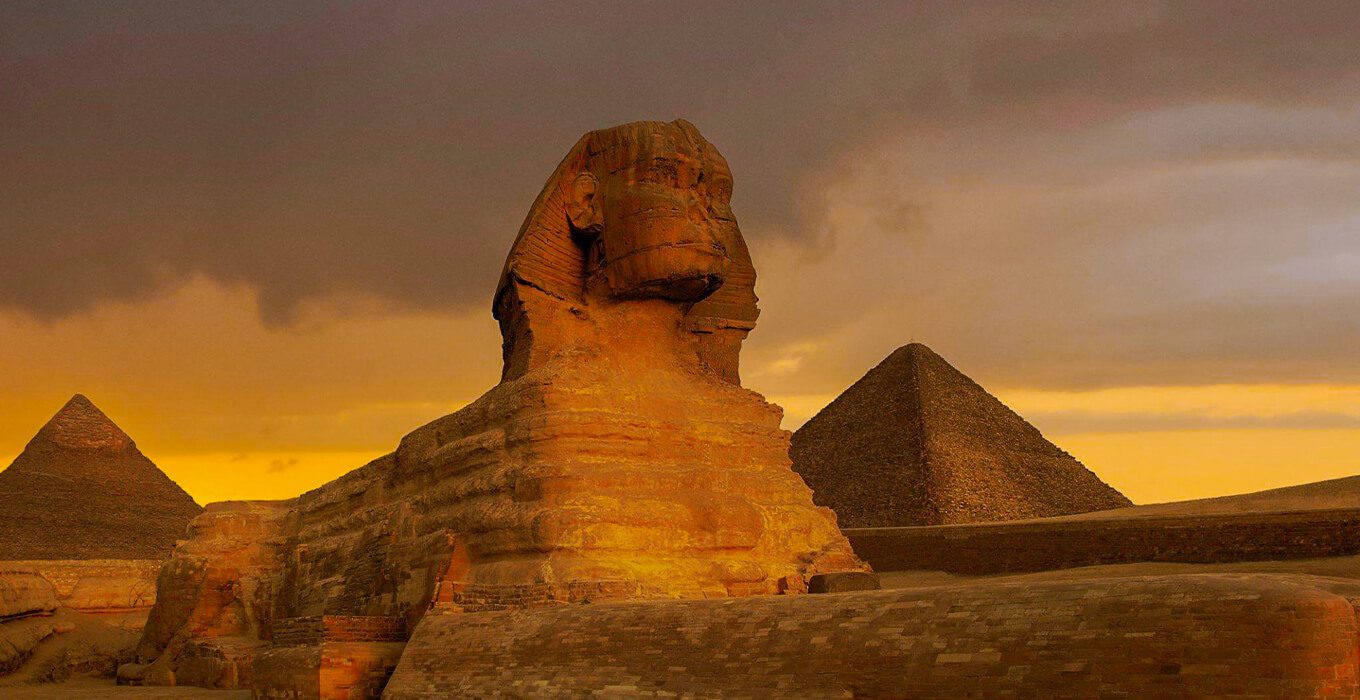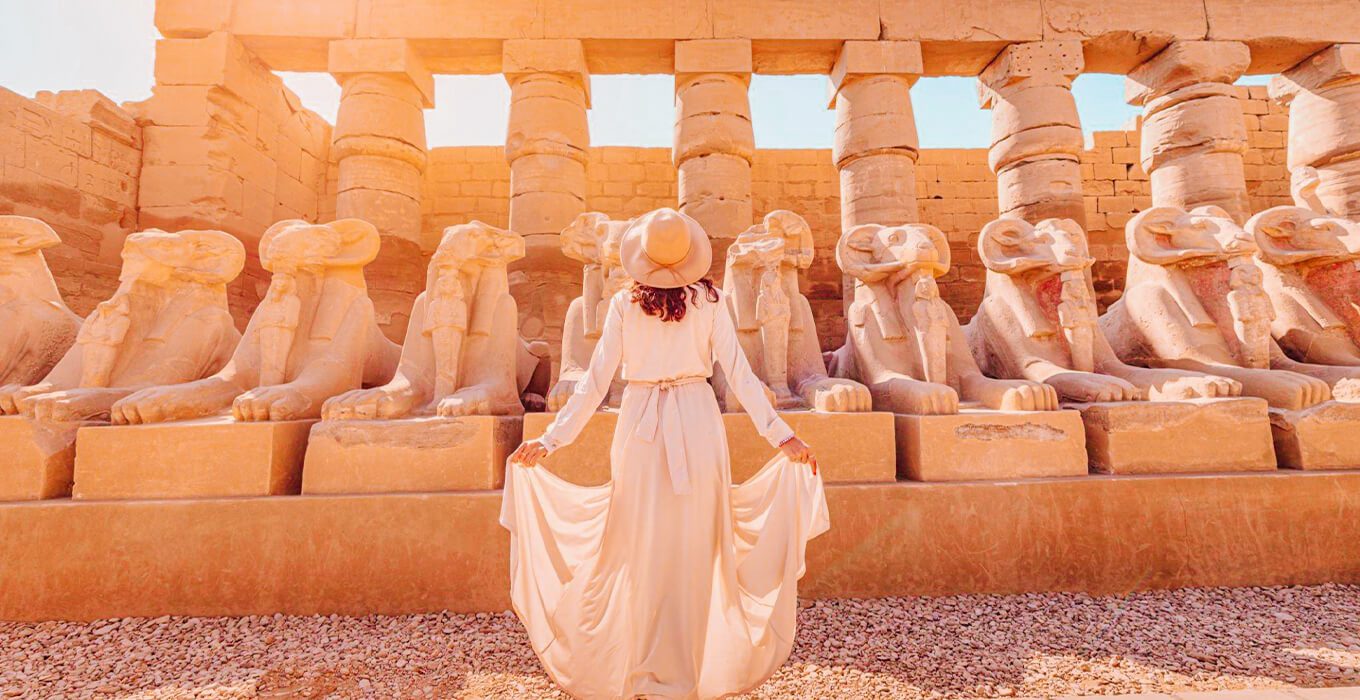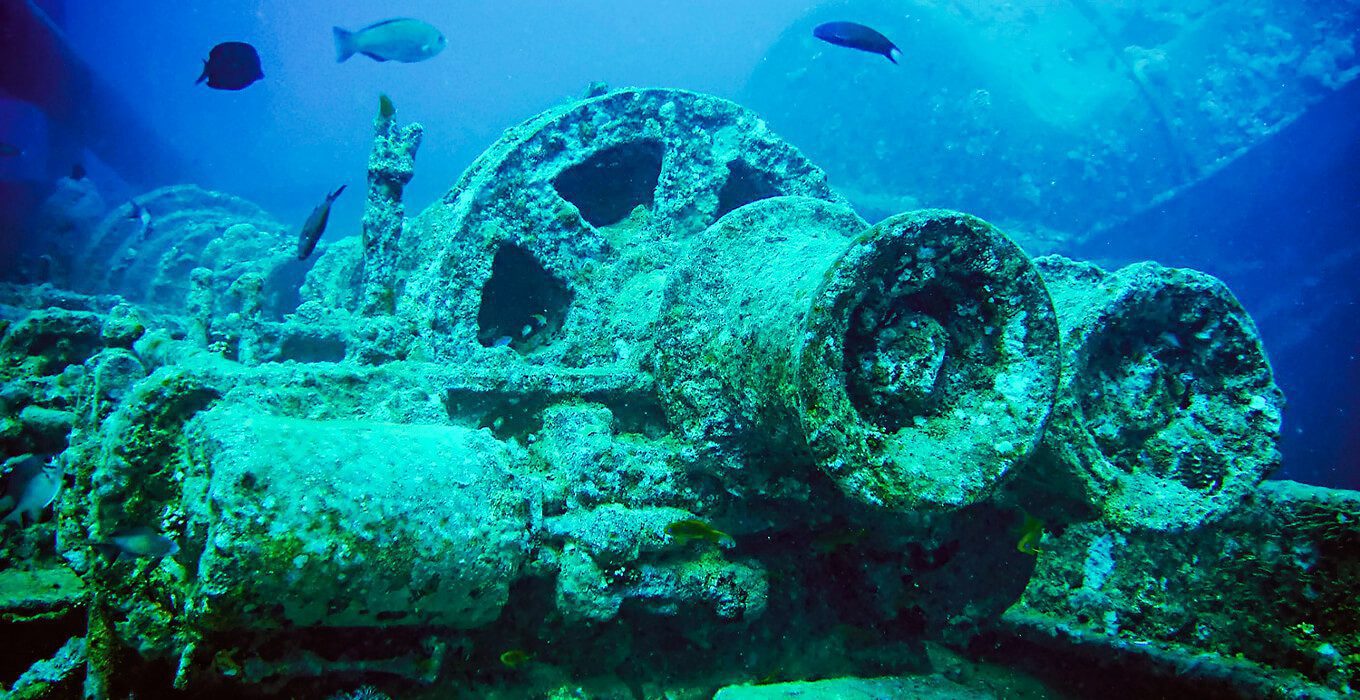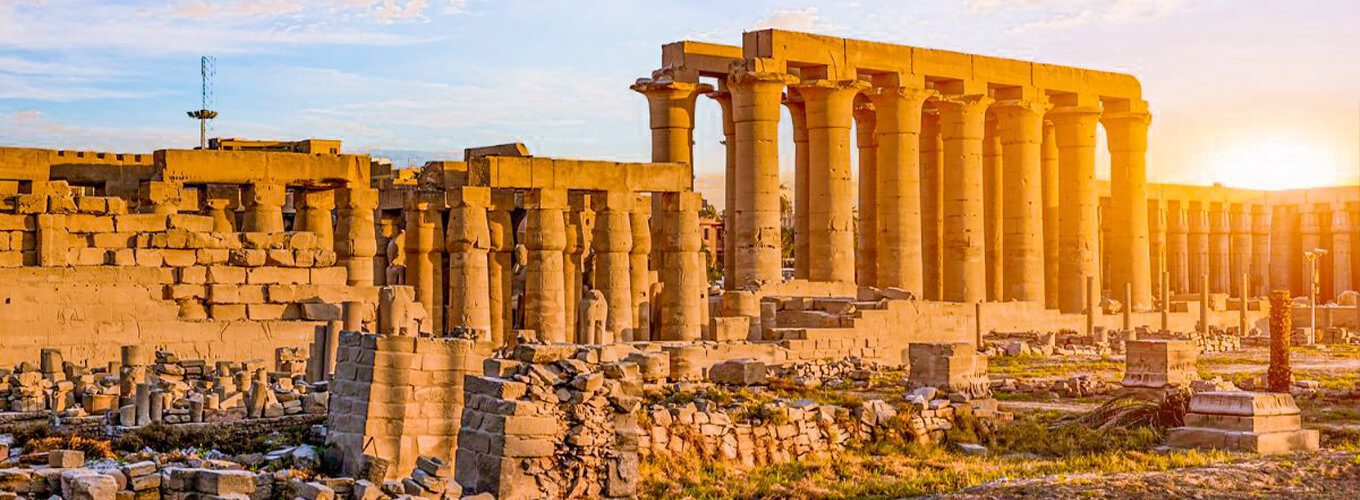Egypt is a treasure trove of ancient mysteries and wonders that have fascinated people for centuries. Boasting some of the Famous Landmarks in Egypt, such as the majestic pyramids and grand temples, the country is a testament to the brilliance and creativity of the ancient Egyptians. In this blog post, we’ll embark on a virtual tour of these renowned Egyptian landmarks that have endured through time, continuing to awe people across the globe.
Our exploration will delve into these landmarks’ history, architecture, and cultural significance, providing insights that deepen your understanding and appreciation of their beauty and complexity. Our journey begins with a visit to one of the Seven Wonders of the World—the famous pyramids of Giza. These towering structures have been mysterious since the Middle Ages, and we’ll explore the intriguing history and theories surrounding their construction.
Moving on, our next destination is the breathtaking temple complex of Karnak, among the world’s largest religious sites. Here, we’ll marvel at the stunning statues, towering columns, and intricate carvings that make this site a true wonder.
Come along on this voyage of discovery as we explore Egypt’s most renowned places, unraveling their history and immersing ourselves in the rich tapestry of Egyptian culture.
Embark on an unforgettable adventure with our Luxury Egypt Tours, designed for those who seek the extraordinary.
Famous landmarks in Egypt and their meanings:
1-The Pyramids of Giza


A visit to Egypt is incomplete without witnessing the awe-inspiring Pyramids of Giza. Serving as the sole remnants of the Seven Wonders of the Ancient World, these pyramids were constructed as tombs for ancient pharaohs. The largest among them, Khufu’s Pyramid (also known as Cheops Pyramid), was built by Pharaoh Khufu around 2560 BC, soaring to 146 meters (481 feet), nearly twice the height of its counterparts.
Create your perfect journey with our Egypt Tailor Made Holidays, where every itinerary is as unique as you are.
2-Egypt landmarks Sphinx of Giza
Adjacent to the Great Pyramid, the Sphinx of Giza is a mythical creature with the body of a lion and a human head. Crafted from limestone and resembling a human figure, the Sphinx stands on a hill formed by layering sand on a rock outcropping. This iconic landmark is a must-visit, offering a captivating glimpse into ancient Egyptian mythology.
3-Grand Egyptian Museum
Situated on the Giza Plateau, the Grand Egyptian Museum is the world’s largest museum, expected to draw over 10 million visitors annually. Construction, initiated in 2014, faced delays but resumed in 2017. Upon completion, the museum will house 100,000 artifacts spanning Egypt’s ancient history, from prehistory to Roman rule.
4-Djoser’s Step Pyramid
A testament to ancient architecture, Djoser’s Step Pyramid is one of Egypt’s oldest and most well-preserved pyramids. Constructed by King Djoser during the 3rd Dynasty, it resides in Saqqara, Egypt. Distinguished by its base length nearly equal to its height, a unique feature compared to other pyramids, it contains various chambers, including burial places for priests. Surrounding stairs allow quick access in different weather conditions.
Planning your ultimate Egypt adventure? Our Egypt Trip Planner is your key to a seamless, unforgettable experience.”
5-The National Museum of Egyptian Civilization
Located in Cairo, the National Museum of Egyptian Civilization (NMEC) showcases Egypt’s cultural heritage from prehistoric times. Established in 2002, the modern building designed by an Egyptian architect features four floors exhibiting over 50,000 artifacts. Eleven galleries within the museum focus on different aspects of Egypt’s rich history and culture.
6-Old Cairo
Also known as Coptic Cairo, this historic neighborhood in Cairo is home to some of Egypt’s oldest churches and religious sites. Once the heart of Christian Egypt, Old Cairo houses significant ecclesiastical institutions, including the Coptic Museum, the Hanging Church, the Greek Orthodox Church of St. George, and the Ben Ezra Synagogue. Exploring Old Cairo offers a walking journey through beautiful architecture, religious sites, and landmarks illuminating Egypt’s rich history and cultural heritage.
7-Al-Muizz Street
Al-Muizz Street, situated in the heart of Islamic Cairo, stands as one of the most renowned historic streets in Cairo, Egypt. Constructed during the 10th century in the Fatimid period, the street bears the name of the fourth caliph, al-Muizz li Din Allah. Once the city’s main thoroughfare, this pedestrian-only area is celebrated for its exquisite architecture, rich history, and vibrant culture. Lined with shops, mosques, and palaces, Al-Muizz Street invites visitors to explore its well-preserved medieval architecture and historic landmarks, offering a captivating journey through Cairo’s past and cultural tapestry.
8-Ibn Tulun Mosque
Ibn Tulun Mosque is among Cairo’s oldest and best-preserved mosques and a significant historical and architectural landmark. Constructed in the 9th century by Ahmed Ibn Tulun, the founder of the Tulunid dynasty, the mosque boasts a distinctive architectural style and intricate design. Visitors to this cultural gem can delve into its attractive features while learning about its rich history. Often used for cultural events and celebrations, the Ibn Tulun Mosque is a testament to Cairo’s vibrant cultural heritage.
9-Cairo Tower
Cairo Tower, the tallest building in Africa and the 15th tallest free-standing structure globally, offers a unique vantage point over Cairo, Egypt. Open to the public since February 8, 2010, the tower features a shopping center, restaurants, and viewing galleries in an underground complex. Its impressive height provides panoramic views of the city, accessible by escalator or elevator from ground level to its peak above sea level.
UK travelers, your gateway to luxury and history begins with our Luxury Egypt Tours and Holidays from UK. Experience Egypt like never before!”
10-Al-Azhar Mosque
Al-Azhar Mosque, a significant landmark in Islamic Cairo, has a storied history dating back to its founding in 970 AD during the Fatimid period. Among Egypt’s oldest mosques, it has served as a center of Islamic scholarship and learning for centuries. Home to the prestigious Al-Azhar University, one of the world’s oldest Islamic institutions, the mosque welcomes tourists and locals. Visitors can explore its tranquil surroundings, gaining insights into Egypt’s religious and cultural heritage.
11-Muhammad Ali Mosque
Perched atop the Saladin Citadel, the Muhammad Ali Mosque is a prominent landmark in Egypt. Muhammad Ali Pasha constructed the mosque in 1805 and 1848, exhibiting a striking blend of Ottoman and Egyptian architectural styles. Designed by the Greek architect Youssef Bushnaq, it features a central dome, two smaller domes, and four minarets—all crafted from alabaster, lending the mosque a captivating white appearance. Offering breathtaking panoramic views of Cairo, the Muhammad Ali Mosque is a testament to Egypt’s architectural prowess and provides an immersive experience for visitors seeking historical and cultural insights.
12-Salah El-Din Citadel
Constructed by Saladin in the 12th century, the Salah El-Din Citadel stands as a testament to medieval architecture in Cairo. Recognized as a UNESCO World Heritage Site, it ranks globally among the best-preserved medieval citadels. Initially established as a military base, the Citadel has undergone numerous expansions throughout its history. Today, it houses several museums, including the Museum of Islamic Art, a modern art gallery, and the national library, offering a rich cultural experience for visitors.
13-Khan El-Khalili Market
Nestled in Cairo’s Islamic neighborhood, the Khan El-Khalili market is one of Egypt’s oldest, dating back to the 13th century. This bustling market is a treasure trove of diverse items, from antiques to jewelry. Renowned for its vibrant atmosphere, it’s the perfect destination for those seeking unique and distinctive objects, such as antique rings or necklaces. The market’s array of vendors ensures a diverse selection for every shopper.
14-Egypt Museum of Antiques
Located in Tahrir Square, the Egyptian Museum has welcomed visitors since 1835, making it one of Egypt’s most frequented tourist spots. With over 120,000 annual visitors, the museum boasts an extensive collection of ancient Egyptian artifacts dating back to 3200 BCE. This collection includes mummies and funerary items such as coffins, funeral statues, jewelry, and weapons, providing a captivating journey through Egypt’s rich history and cultural heritage.
15- Karnak Temple Complex


The Karnak Temple Complex is one of the world’s largest temples, boasting over 1,000 temples and shrines. Constructed over more than 1,000 years by various pharaonic dynasties, approximately 20% of the original buildings endure today. The complex is divided into three main parts:
- Amun-neighborhood Ra’s (the most visited part)
- Mut and Khonsu Precincts (lesser known)
The best time to go to the Karnak Temple Complex is in the winter, which is more relaxed and less busy than in summer.
16-Luxor Temple
The Luxor Temple, situated on the east bank of the Nile River in Luxor (formerly Thebes), was constructed in the 14th century BC by pharaohs Amenhotep III, Ramesses II, and Seti I. Dedicated to the gods Amun-Ra, Mut, and Khonsu, the Temple comprises three main parts, including an entrance hall, an inner court with columns, and a courtyard with statues, including notable ones of Ramses II and Queen Tiye. The Temple also features a shrine for the Hathor goddesses, symbolizing love and beauty.
17-The Valley of the Kings
The Valley of the Kings, renowned for the tombs of numerous pharaohs, is located in Egypt, with graves cut into cliffs containing hieroglyphs and paintings depicting life and each pharaoh’s rule. Among these tombs, the most famous is that of King Tutankhamun, discovered in 1922 and remarkably well-preserved.
18-Temple of Hatshepsut
Situated in Der al-Bahari in southern Egypt, the Temple of Hatshepsut was built by the Egyptian queen Hatshepsut around 1508–1458 BC. Dedicated to the gods Isis and Osiris, the well-preserved Temple features inscriptions providing insights into daily life during that period.
19-The Colossi of Memnon
The Colossi of Memnon are two stone statues of Amenhotep III on the west bank of the Nile in Luxor. Constructed during Dynasty XVIII, these statues, with one standing at 20 meters and the other at 10 meters, flanked the entrance to Amenhotep III’s Temple.
20-Aswan High Dam
Built between 1960 and 1970, the Aswan High Dam spans the Nile River in Aswan, Egypt. Costing $1 billion, it was designed to control floods and provide water for irrigation. Constructed by Soviet engineers, the dam has significantly impacted Egypt’s government, society, and the broader region, serving irrigation and flood control purposes.
21-Nubian Village
Situated in Aswan, the Nubian Village is one of Egypt’s largest Nubian villages, established in the 1800s by a group wanting to return to traditional Nubian life. With approximately 1,000 residents, including farmers, merchants, and artists, the Village preserves conventional building methods, using mud bricks from Nile silt. Houses feature courtyards for communal gatherings, and residents sleep on mattresses on wooden frames.
22-Abu Simbel Temples
Abu Simbel comprises a pair of temples in southern Egypt near the Sudanese border. Built by Pharaoh Ramesses II between 1279 and 1213 BCE to commemorate his victory over the Hittites, the temples were relocated in 1966 due to a dam project. The site is part of UNESCO World Heritage Site number 733, “Nubian Monuments, Abu Simbel, and Nuri.”
23-Edfu’s Temple
The Temple of Edfu, located on the West Bank of the Nile in Upper Egypt, dates back to the Ptolemaic era. The Temple is dedicated to Horus and Seti I and was built in three stages by Ptolemy III Euergetes, Ptolemy XI Alexander II Caesar, and Cleopatra VII Philopator.
24-The Kom Ombo Temple
Situated in Aswan, the Temple of Kom Ombo was constructed during the Ptolemaic era and is dedicated to Haroeris (Horus) and Sobek, the crocodile god. The Temple has two main parts, each devoted to one of these deities.
25-Philae Temple


Built during the Ptolemaic period (237–57 BC), the Philae Temple in Aswan was originally located on an island but was later moved to Agilkia Island due to the creation of Lake Nasser. Rediscovered by Johann Ludwig Burckhardt in 1815, the Temple showcases Ptolemaic architecture.
26-Alexandria Library
Founded by Ptolemy II in the third century BC, the Alexandria Library was the world’s first known library, containing over 700,000 books. Unfortunately, it was destroyed in 48 BC by fire.
27-Pompey’s Pillar
In Alexandria, Egypt, Pompey’s Pillar is an ancient Roman triumphal column built in 297 AD to honor Pompey the Great. Standing at 24.3 meters and made of red granite, the Pillar has been a landmark since the 14th century, despite losing its top due to natural causes.
28-Qaitbay Citadel
Constructed in 1472 CE by Sultan Qaitbay in Alexandria, the Qaitbay Citadel is a palace and fort with a rich history. Initially serving as a military stronghold, it later became a royal residence. Today, it is a popular tourist attraction, featuring museums showcasing its history, architecture, and artifacts from ancient cultures.
29-Siwa Oasis
Siwa Oasis, situated in the Western Desert of Egypt, is known for its palm trees, mud-brick houses, and the Temple of Amun. Alexander the Great once resided in this area, constructing a fortress. The oasis is also recognized for its salt lake, a crucial resource for local inhabitants over the centuries.
30-White Desert National Park
Found in Farafra Oasis, Egypt’s Western Desert, the White Desert National Park is the country’s largest oasis. Designated as a UNESCO World Heritage Site in 1985, it boasts a distinctive landscape featuring large white chalk rock formations, known as “Whitesands,” created by minerals from underground water seeping through sandstone cliffs.
31-Sharm El Sheikh
Located at the southern tip of the Sinai Peninsula, Sharm El Sheikh is a popular tourist destination known for its year-round warm weather, clear waters, and various hotels, restaurants, bars, clubs, and casinos.
32-Hurghada
Hurghada, part of Egypt’s Red Sea Governorate, began as a fishing village 1926. Over time, it has become a top tourist destination, renowned for its beaches, water sports, and upscale hotels.
33-The Monastery of St. Catherine
Situated at the foot of Mount Sinai, the Greek Orthodox St. Catherine’s Monastery was built in the sixth century and is a UNESCO World Heritage Site. It houses various churches and chapels, with the Church of Saint Catherine as its main church. The monastery is a significant pilgrimage site for Eastern Orthodox Christians and a center for religious tourism.
34-Mount Sinai
Mount Sinai, a double-volcano mountain in the Sinai Peninsula, is 2,285 meters (7,495 feet). It is considered holy in Jewish and Muslim traditions and is renowned as the place where Moses received the Ten Commandments. Visitors can trek to Mount Sinai from St. Catherine’s Monastery.
35-The Ras Mohammed National Park
Located on the Sinai Peninsula, the Ras Mohammed National Park is a premier diving destination renowned for its diverse marine life, including dolphins, sharks, and manta rays. The park also features archaeological sites, such as ancient temples and tombs, providing a glimpse into the region’s rich history.


Conclusion and travel tips for seeing famous places in Egypt
Egypt is a great place to visit, especially if you like learning about the history and culture of the past. Egypt has many places to see, but these are some of the most well-known and important ones.
You can get a visa at any airport or border crossing with Egypt when you arrive (except Rafah). Before you go, it’s best to research what places are open when (some temples are only open during certain months), how long each site takes, and how long it takes to get from one place to another. You can find travel tips online or by asking people who live nearby!
If you’re going to Egypt, you should see these well-known places. They are lovely and will teach you about the country’s long history.
Don’t miss out on our related article:
- Top Egypt Outdoor Activities and Adventures
- Egypt Museums: 20 Top-Rated Museums to Visit
- Saladin Citadel in Cairo: A Historic Fortress in the Heart of Cairo
- Top 14 Mosques in Cairo: Discover the Spiritual Charm of Cairo
- Cairo Sightseeing: Explore Top 30 Things To See in Cairo
- 14 Days Luxury Tour Cairo
